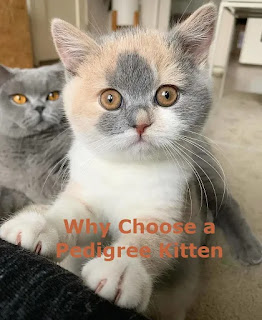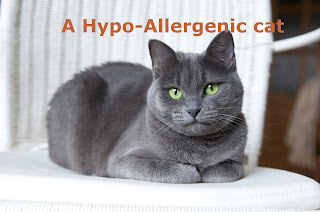Why Choose a Pedigree Kitten? - Best Pets 4 Home
Why Choose a Pedigree Kitten?
3 week old Wychwood Russian Blue Kitten
For more information about us and our cats, please take the time to read our Library articles, under the tab at the top of our website.
Although moggies will be significantly cheaper to buy than pedigree cats, the cat owner remains responsible for the same costs in food, vet bills and shelter throughout the life of the cat. Many pedigrees and moggies will live for 15 to 20 years, so the decision is a long-term consideration.
Many people are concerned about the health and genetic problems associated with pedigree cats, and indeed, it can be perceived as unethical to either breed or adopt a pedigree cat in preference to the ‘more natural and robust’ moggy. Please read our article about the Health of the Russian Blue Cat for more information about this aspect of the Russian Blue breed.
One advantage of sharing your life with a pedigree cat is that you can select, within reason, the physical appearance and certain traits of the personality of your future companion. Obviously, each cat has its own, markedly different personality, but cats of the same breed do tend to have similar character traits. As such, it is possible to select a breed that suits your own personality and lifestyle. The Russian Blue, for example, tends to be quiet and relaxed, as well as retaining their kitten-ish, playful and affectionate behaviour during their entire life. Some will enjoy the social lives of their families, and others will relish the quiet life with their parents. It falls to us to ensure that each kitten we place, has the right temperament to suit their new family life.
At Wychwood Russian Blue Cats, we have spent several years researching the genetic background of different breeds before settling for the Russian Blue cat. The Russian Blue breed is not associated with any genetic or inheritable diseases, and cats of this breed can expect a 10 to 20-year life span, without requiring any more veterinarian treatment than other cats of similar ages, including moggies.
As responsible and conscientious breeders, we are committed to maintaining the health of the Russian Blue cat and improving the genetic diversity of the breed group. We therefore we take great care in selecting our breeding cats from healthy and genetically diverse lines. Our Foundation queen, ‘Malevitch Fancy Face Freja’, was from Denmark, as was the sire of our first litter, ‘Malevitch Rain in Blue’. The sire of our second litter, ‘Katzenhof Kosmos’ was from Finland, and ‘Cheeky-Rascal Take it Easy’ who sired of our third litter, is from the Rhenish Hesse region of Germany. Our first, “in-home” stud, ‘Flashpaws A Limited Edition’, or “Eddy”, was bred in Austria for us. Our boys and girls have come from Canada, America, Italy, the Czech Republic, and Holland. Our breeding programme is very dynamic because we are always striving to get closer to our chosen standard of points for the Russian Blue, and genetic diversity is key to our goals.
When one considers that the moggy population of any neighbourhood will have one dominant male who sires most of the kittens within a 15-mile radius, who has an average lifespan of 2-5 years, and that his daughters and granddaughters will probably be mated by either him or his sons, one can realise how inbred a population of moggies can be. For example, our vet has told us that moggies in Northampton have extra toes thanks to their high inbreeding. This inbreeding is mirrored around all moggy populations that are not deliberately outcrossed to more than the occasional newcomer from a different area.
Getting a kitten from a breeder who is dedicated to genetic diversity and who works globally is a way to ensure that your kitten is genetically diverse, healthy and fit.
We are proud to have introduced a new lineage of TICA and now CFA standard Russian Blue cats in Britain, and we hope that our kittens will be a positive benefit to the future of the Russian Blue breed.






